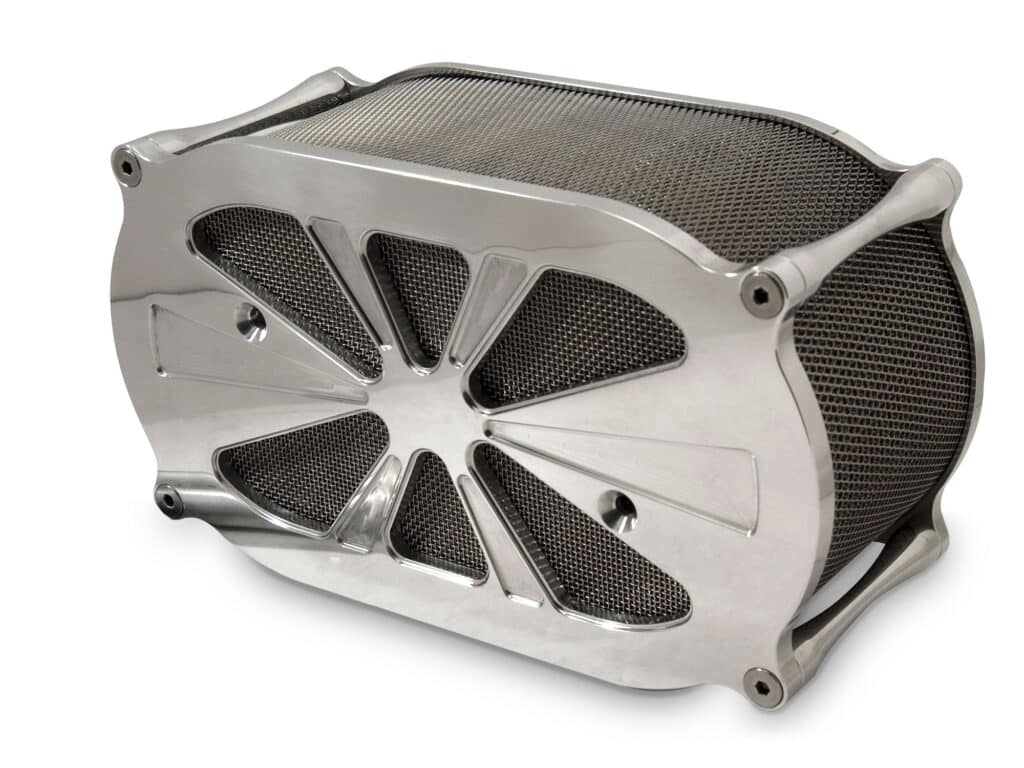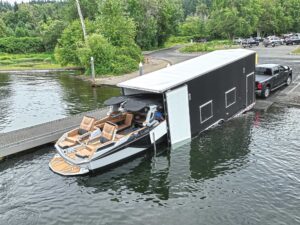
According to federal regulations (33 CFR 183.505), marine carburetors and fuel-injection systems must have a flame arrester installed to prevent a backfire from igniting fuel vapor in the engine compartment. If the air-induction system is itself a flame arrester, or if a backfire would be directed outside the boat, then the flame arrester is not required. Some fuel-injection systems and ram air-induction systems meet this last part. Others don’t. If you are worried about the engine getting enough filtered air, there are flame arresters on the market that also act as filters. Produced in consultation with the experts at Hardin Marine, read on to find out what to look for when buying a marine flame arrester for your gasoline inboard, sterndrive or jet boat.
Check the Markings
Flame arresters used to require US Coast Guard approval, but since 1991, units with approval from the Society of American Engineers (SAE J-1928), Underwriters Laboratories (UL 1111) or Coast Guard, and marked as such, are considered safe for use aboard your boat.
Circumference
A larger flame arrester can allow greater airflow, and thus better engine performance and economy. Check to see if there is clearance around the current arrester’s circumference. Premium suppliers such as Hardin Marine offer OEM-style flame arresters in large sizes.
Height
As stated, a larger arrester can provide better filtration and airflow, and thus enhanced performance and economy. Check for clearance with the engine hatch above the arrester to see if a taller model will fit.
Vents
Some flame arresters are fitted with vents from the fuel pump or valve cover. If vent lines connect to your boat engine’s flame arrester, measure the inside diameter of the vent line. You might need to order an adapter kit to mate the vent hose to the arrester. This might require trimming to fit.
Read Next: Fixed Marine Fire Extinguishing Systems for Boats
Carb Diameter
If you are running a carbureted engine, measure the diameter of the carburetor’s air inlet flange to order the correct-size flame arrester. Got twin carbs? Measure to get the center-to-center dimension and then check that two arresters of a given diameter will fit. Dual flame arresters are available from sources such as Hardin Marine, CP Performance, K&N and other brands.
Aesthetics
Marine flame arresters sit right atop the engine and are often chromed or gleaming metal. Suppliers can often anodize, powder-coat, color-match or add logos to flame arresters to coordinate with the make and colorway of the engine(s) or boat.
Flame Arrester Maintenance
Many boaters don’t realize that accessory belts shed rubber and contribute largely to dirty flame arresters. Remove flame arresters annually, and clean or replace them. A dirty flame arrester reduces engine airflow and diminishes performance and economy. Brake cleaner followed by compressed air is a preferred method. Some boaters use degreaser followed by a freshwater rinse. Blow air or flush with water from the clean side out.









